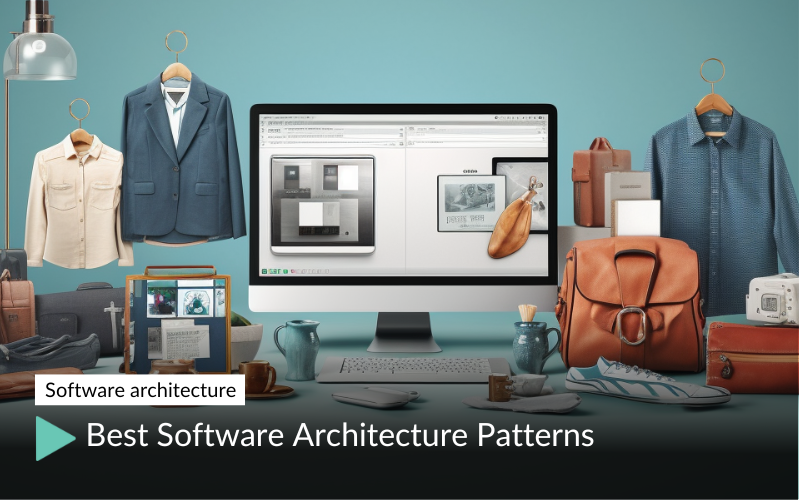The Evolution and Significance of Software Architecture Patterns
In the realm of software development, an architectural pattern isn't just a design on paper; it's the blueprint that shapes our digital world. At its core, an architectural pattern provides a set of predefined solutions, addressing common challenges and issues in software design.
These patterns, often referred to as software architecture patterns, serve as templates, ensuring that software is structured in a way that balances both current requirements and future growth. Over the years, the significance of these patterns has only grown, evolving with the rapid pace of technological advancement.
The importance of software architecture patterns cannot be overstated. They lay the foundation for building robust, scalable, and maintainable software systems. As we delve deeper into the digital age, the role of architectural patterns in modern software development becomes even more crucial.
With the emergence of different software architecture patterns, including the increasingly popular pattern-oriented software architecture, developers now have a diverse toolkit to address unique project needs. These patterns not only guide developers in creating efficient systems but also ensure that software remains adaptable in the face of ever-changing user demands and technological shifts.
A Deep Dive into 2023's Best Software Architecture Patterns
In the world of software, having the right design is like having a good blueprint when building a house. These designs, known as software architecture patterns, guide developers in creating strong and efficient software.
The best software architecture patterns have become the gold standard, guiding developers in creating solutions that stand the test of time. These patterns, ranging from the most popular software architecture patterns to more niche ones, offer a roadmap to address diverse project challenges.
But to bring these designs to life, we need the right tools. Think of them as the hammers, nails, and bricks of the software world. In this article, we'll introduce you to the top 10 tools that help developers use these patterns effectively.
So, if you're curious about real-world software architecture patterns examples and the tools that power them, you're in for a treat! Let's get started.
1- Layered Pattern (N-Tier Architecture):
Imagine building a house with separate floors, where each floor has a specific purpose. The Layered Pattern, often called N-Tier Architecture, works in a similar way for software.
It divides software into "layers," each with its own job. This makes the software neat and organized. Well, it helps developers find and fix problems easily, and it's simpler to add new features.
➕ Pros: It's like having a tidy room; everything is in its place, making it easier to manage. Plus, if one part has an issue, it doesn't mess up the rest.
➖ Cons: Sometimes, setting up these layers can take time, and if not done right, can slow things down a bit.
- Real-world example: Think of online shopping websites. They have separate layers for showing products, handling payments, and managing user accounts. Each part works on its own but together creates the whole shopping experience.
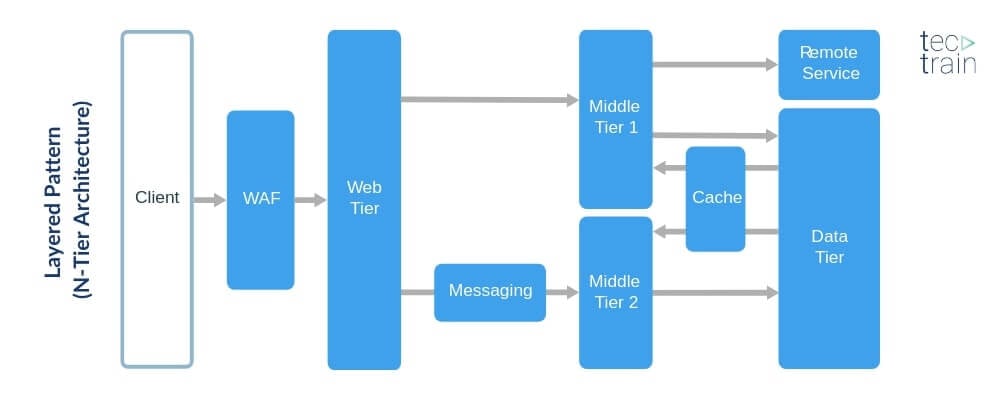
2- Client-Server Pattern
Picture a restaurant. You're the customer (or "client"), and the chef in the kitchen is the "server". You ask for a dish, and the chef prepares and serves it to you. In the digital world, the Client-Server Pattern works similarly.
It's the basic setup for many apps and websites we use daily. The "client" (like your phone or computer) asks the "server" (a powerful computer somewhere else) for information or to do a task. Why do people use it? It's simple and efficient.
➕ Pros: It's a tried-and-true method. Servers can be powerful, handling heavy tasks and storing lots of data, while clients can be lightweight.
➖ Cons: If the server has a problem, everyone using it feels the impact. And sometimes, there can be a delay if many clients ask for things at once.
- Real-world example: Think of streaming a movie on a platform like Netflix. Your TV or laptop (the client) requests a specific movie, and Netflix's server sends the movie data for you to watch. You enjoy the film without downloading the entire thing, thanks to this back-and-forth communication between your device and the server.
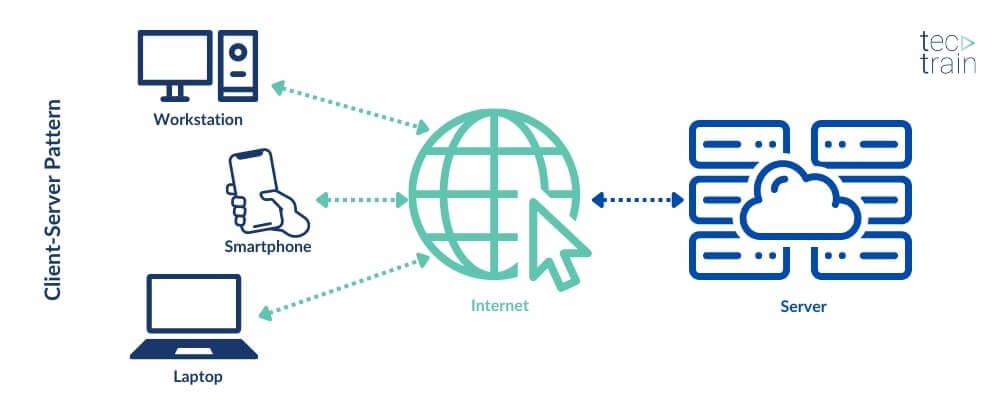
3- Microservice Architecture
Imagine a big toy set made up of many small, different toys. Instead of one giant piece, you have several smaller pieces that can work on their own but also come together to create something bigger. That's how Microservice Architecture works in the software world.
Instead of one big program (or "monolithic" application), the software is broken into smaller, independent parts called "microservices." Each part does its own job. It means if one part breaks, the whole system doesn't crash. Plus, it's easier to update or add new features.
➕ Pros: It's flexible and can grow easily. If there's a lot of traffic, you can just add more of the same microservice.
➖ Cons: It can be tricky to set up and needs good communication between the microservices.
- Real-world example: Many big companies, like Amazon and Netflix, use this approach because it lets them move fast and stay reliable.
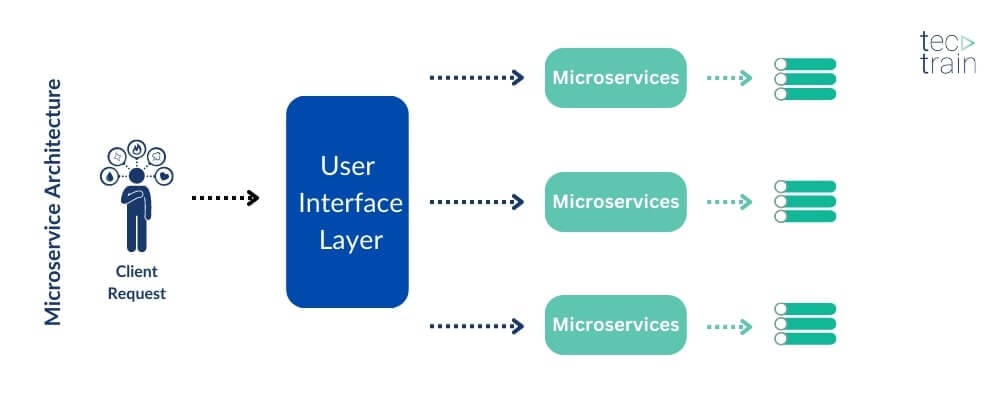
4- Event-Driven Architecture
Think of a busy kitchen where the chef starts cooking as soon as an order comes in, rather than waiting for a set time. Event-driven architecture (or EDA) is a bit like that kitchen. In the tech world, it means software responds immediately when something happens (an "event").
With the boom in real-time data and the need for instant reactions, EDA is like a superhero. It can handle many tasks at once without waiting in line (that's the "asynchronous" magic).
➕ Pros: It's super fast and can handle lots of information all at once.
➖ Cons: It can be a bit tricky to design and sometimes hard to track if something goes wrong.
- Real-world example: Social media notifications. When someone likes your photo or sends a message, the system instantly lets you know. That's EDA in action, making sure you don't miss a beat!
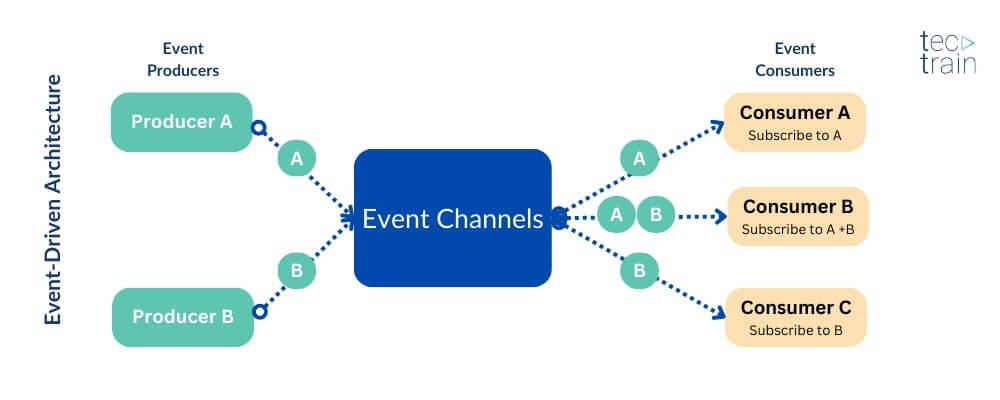
5- Model-View-Controller (MVC)
Imagine a theater play. The "script" (or Model) has all the information - the story, characters, and dialogues.
The "actors on stage" (or View) show the story to the audience. The "director" (or Controller) decides how the story will be presented, guiding the actors.
In the software world, MVC works similarly. It's a way to organize code.
The Model holds the data, the View displays it, and the Controller decides how data moves between the Model and the View. It keeps things tidy. Each part has its job, making it easier to manage and update.
➕ Pros: It's organized, making it easier to spot and fix issues. Plus, changes in one part don't mess up the others.
➖ Cons: It can be a bit complex to set up initially.
- Real-world example: Shopping websites. When you search for a product, the Model fetches the item details, the View displays them, and the Controller handles your search request and shows the results. It's a smooth process, thanks to the MVC magic!
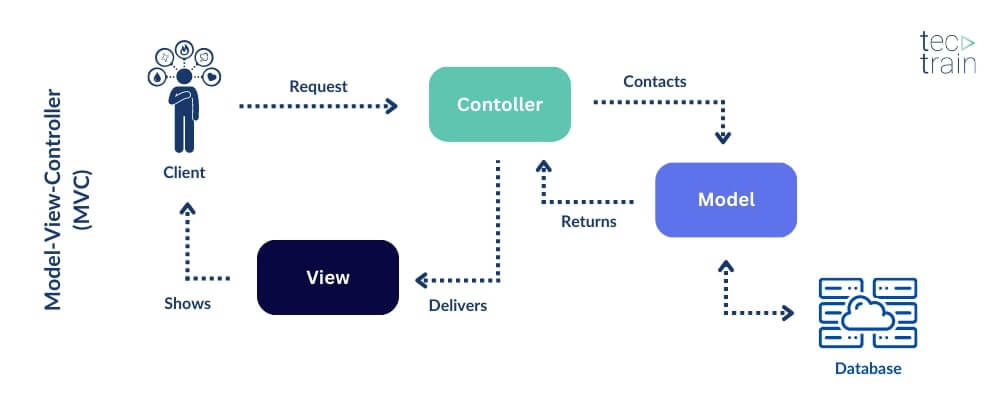
6- Service-Oriented Architecture (SOA)
Imagine a city with different services like the post office, fire department, and libraries. Each service has its own specialty and operates independently, but they all work together to serve the city's residents.
In the digital world, SOA is similar. It breaks software into separate "services," each doing its own special task. But when combined, they create a complete application.
Why is this approach loved? It's like having a team where each member does what they're best at. It makes big, complex software easier to manage and update.
➕ Pros: It's flexible. If one service needs an upgrade, you can do it without disturbing the others.
➖ Cons: All these services need to communicate well, which can sometimes be challenging.
- Real-world example: Online banking. When you log in, one service checks your password, another displays your account balance, and yet another handles money transfers. Each service does its part, making your banking experience seamless and efficient.
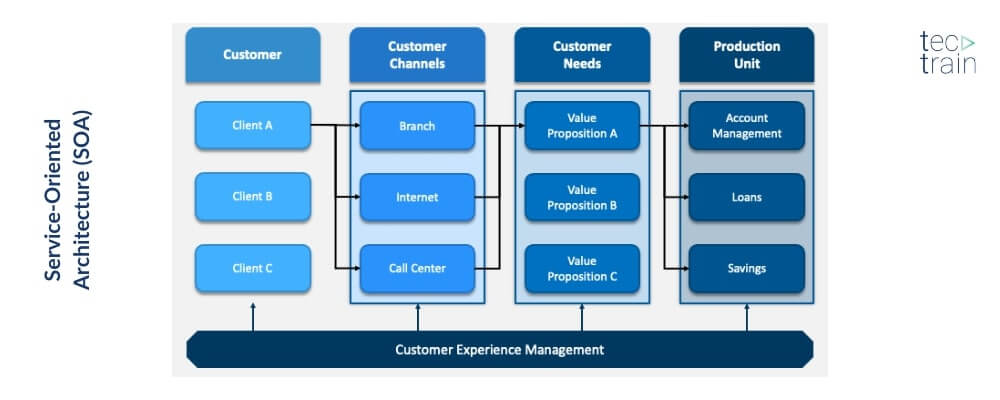
7- Repository Pattern
Think of a library. Instead of searching the entire building for a book, you go to the front desk (or "repository"), and they handle the task for you. The Repository Pattern in software acts like that front desk. It creates a middle layer that handles data access, making it easier to manage and change data sources.
It's a key player in what tech folks call "clean architecture." By keeping data access separate, software becomes neater and more maintainable.
➕ Pros: It's like having a tidy workspace; everything's organized, making updates and fixes smoother.
➖ Cons: Setting it up can take a bit more time initially.
- Real-world example: Online stores. When you view products, the store doesn't fetch data directly from the main database. Instead, it uses the Repository Pattern to get the information, ensuring that the process is efficient and that any changes in the database won't mess up the shopping experience.
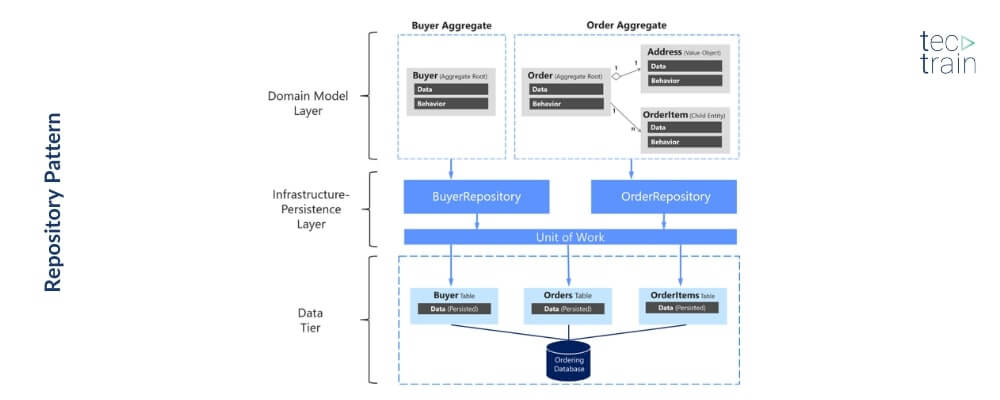
8- CQRS (Command Query Responsibility Segregation)
Imagine a busy restaurant kitchen. One team handles cooking (or "commands") while another team manages orders and checks inventory (or "queries"). They have different tasks, so they work separately for efficiency.
CQRS in software is a lot like that kitchen setup. It divides a system's operations: one side handles changes (commands) and the other retrieves data (queries). It makes systems faster and more organized.
➕ Pros: It's efficient. By separating tasks, systems can handle more work and avoid mix-ups.
➖ Cons: It might seem complex at first, and setting it up requires careful planning.
- Real-world example: E-commerce stock management. When you buy an item, the "command" side updates the stock. When you just want to see how many are left, the "query" side provides the info. This ensures the store runs smoothly, even during big sales or high traffic times.
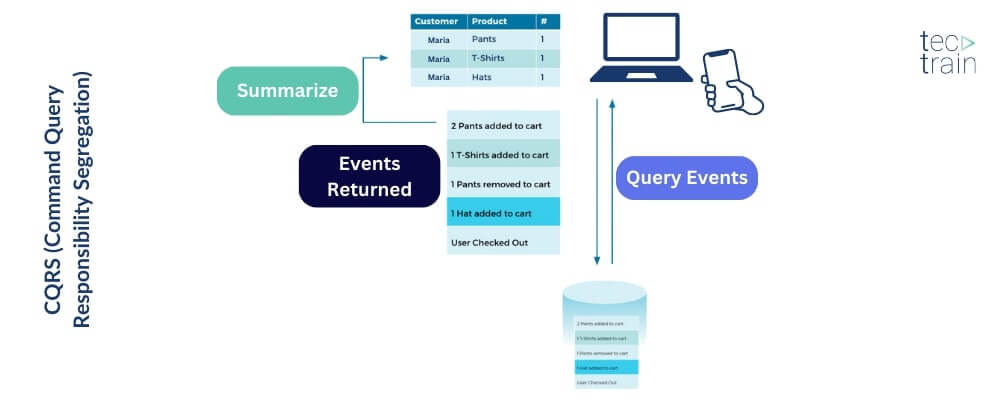
9-Domain-Driven Design (DDD)
Think of building a theme park. Instead of starting with rides or decorations, you'd first think about the overall theme and the experience you want for visitors.
DDD is similar but for software. It starts with the main idea or "domain" (like the theme for the park). This means focusing on the core business logic before diving into coding details. It ensures the software truly meets the needs of the business or user.
➕ Pros: It leads to more relevant and user-friendly software because it's built around real-world needs.
➖ Cons: It requires a deep understanding of the business, which can take time.
- Real-world example: Consider a hospital management system. Using DDD, developers would first understand how hospitals work, from patient appointments to surgeries, before creating the software. This ensures the system truly helps doctors, nurses, and patients, even in complex scenarios.
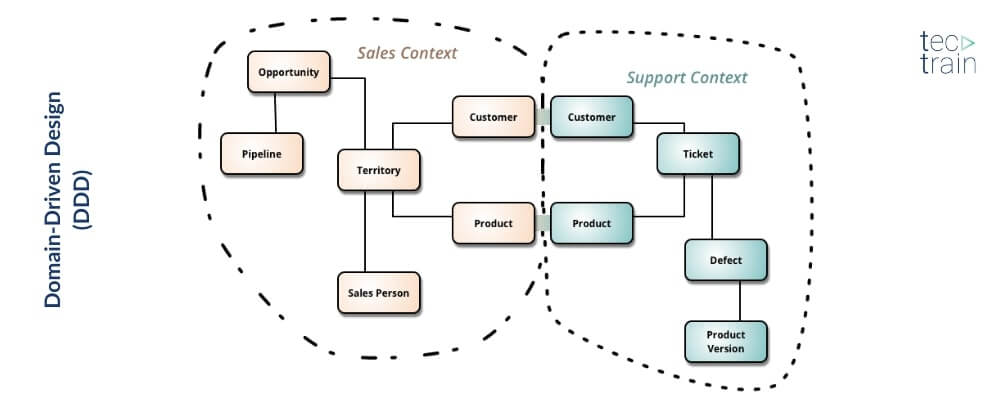
10- Peer-to-Peer (P2P) Architecture
Imagine a neighborhood book club where everyone shares books directly with each other, without needing a central library. P2P in the tech world works similarly. Instead of relying on one main computer (or "server"), devices connect and share directly with each other. It's like a digital handshake.
It's all about being decentralized. This means no single point of failure and more freedom in sharing.
➕ Pros: It's flexible and can handle lots of users. Plus, if one device has a problem, the whole system doesn't stop.
➖ Cons: Security can be a challenge, and not all devices in the network are equally reliable.
- Real-world example: Ever used a file-sharing app or watched a live stream? Many of these use P2P, letting users share files or stream content directly between devices, making the process fast and efficient.
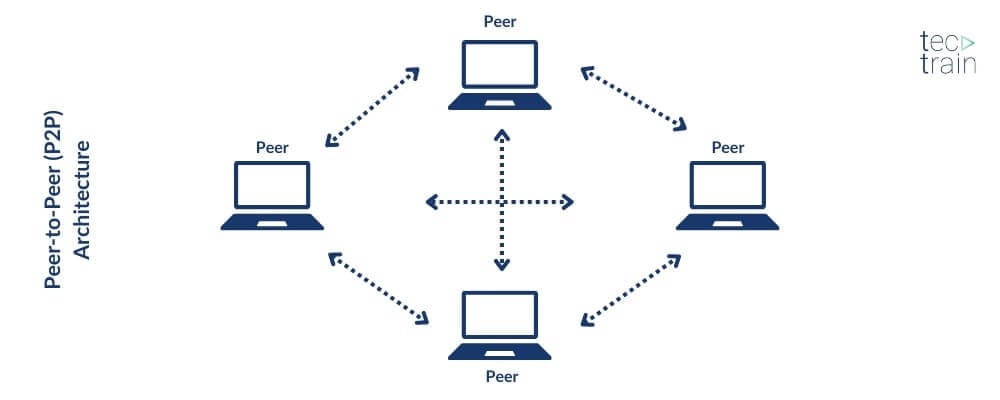
Featured Resource
What does a software architect do?
Software Architecture in Practice: Real-World Applications
Comparison Between Different Software Architecture Patterns
In the bustling city of software design, architectural patterns are like the various building styles we see - from skyscrapers to bungalows. Each has its charm and purpose. When we look at the top 10 patterns, some stand tall in agility, adapting quickly to changes. Others shine in ease of deployment, setting up swiftly like pop-up stalls.
Testability is another arena; certain patterns are like open books, easy to check and validate, while some require a deeper dive. Then comes scalability - the ability to grow.
Some patterns are like bamboo, shooting up rapidly, while others take their time, ensuring a sturdy foundation. Lastly, performance is the showstopper. While some patterns dazzle with speed and efficiency, others prioritize stability and consistency.
As we delve deeper, you'll discover the unique traits of each pattern, helping you choose the perfect architectural style for your software masterpiece.
Conclusion
The world of software is ever-changing, much like the shifting sands of a desert. As we've journeyed through the vast expanse of software design, it's evident that the landscape of software architecture patterns is evolving at a rapid pace.
These changes are driven by the demands of modern businesses, technological advancements, and the ever-growing needs of users. Modern software architecture patterns are not just about building efficient systems today but also about anticipating the needs of tomorrow.
As we look to the horizon, we can predict a future where adaptability, decentralization, and user-centric designs take center stage. The next wave of software architecture will likely be marked by even more personalized and responsive systems, seamlessly integrating with the fabric of our digital lives.
The future is exciting, and the patterns we've explored are just the beginning of what's to come.






